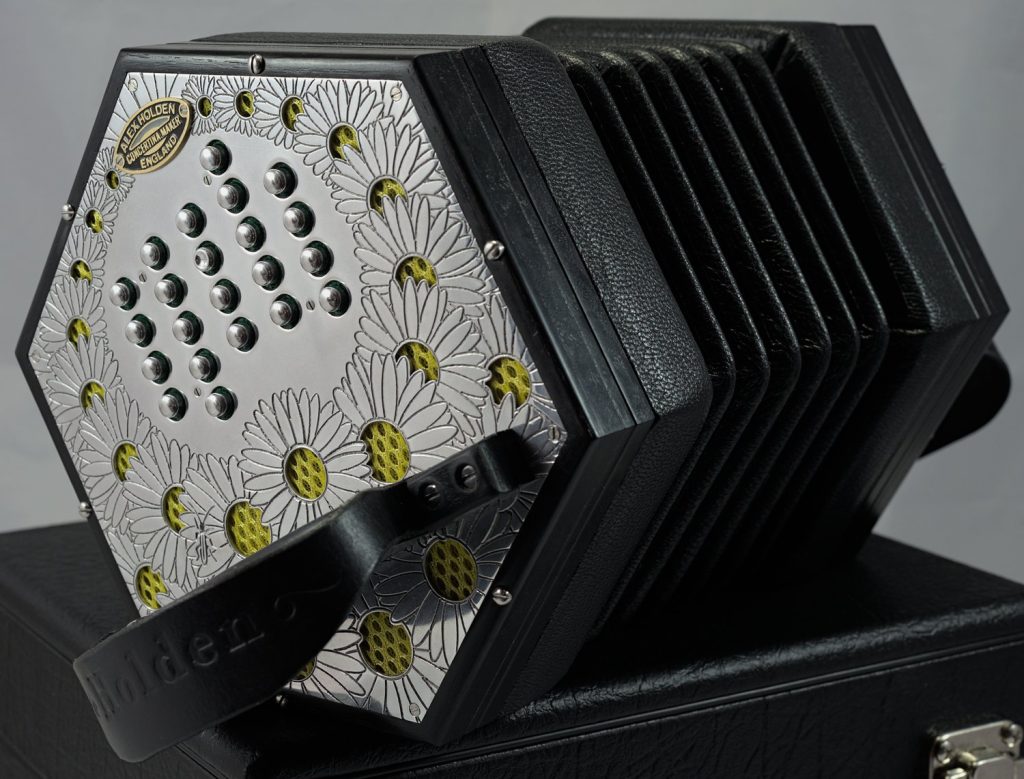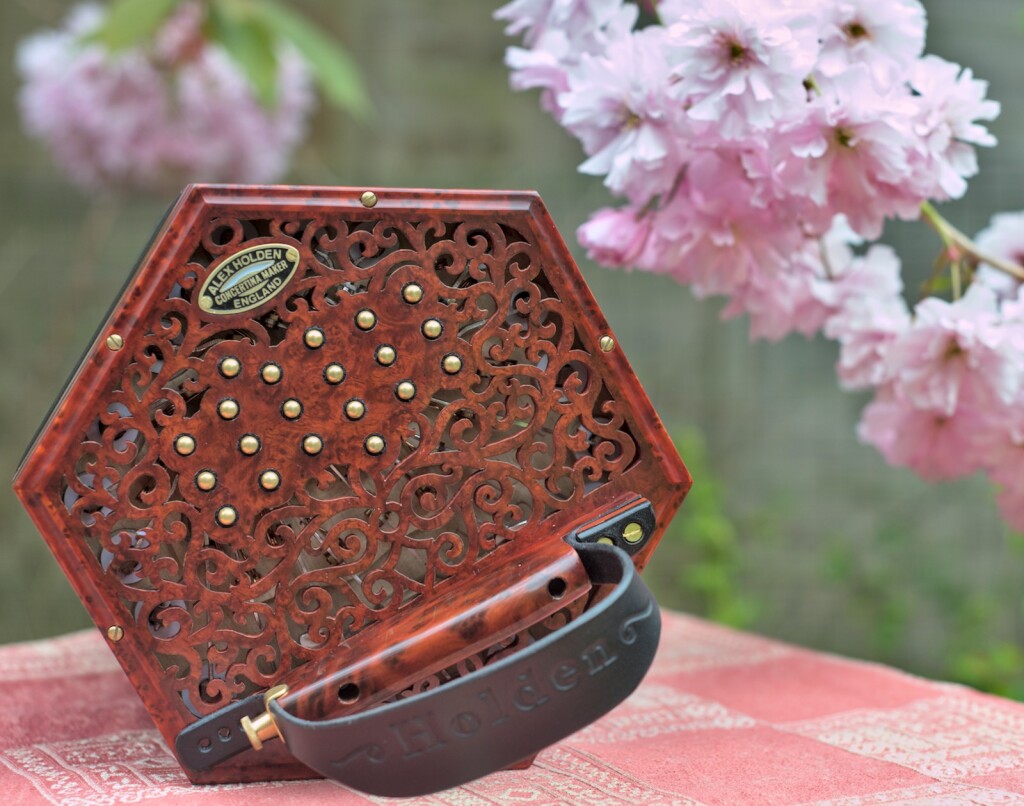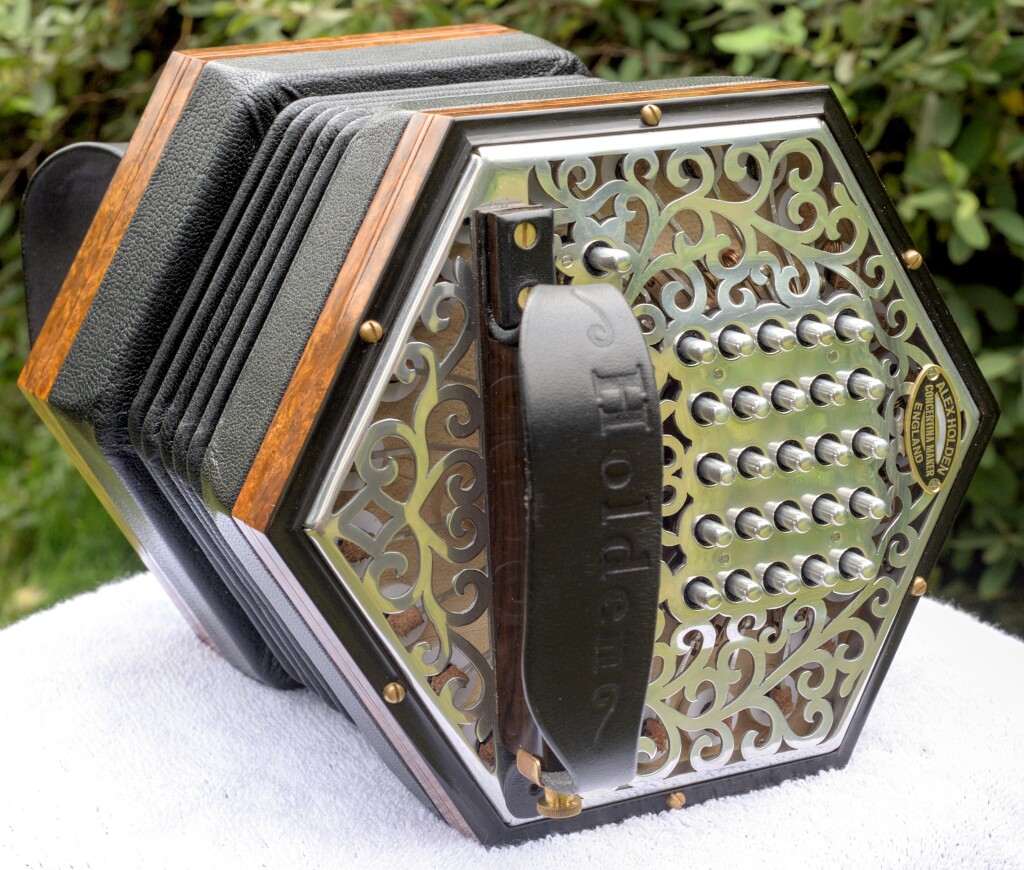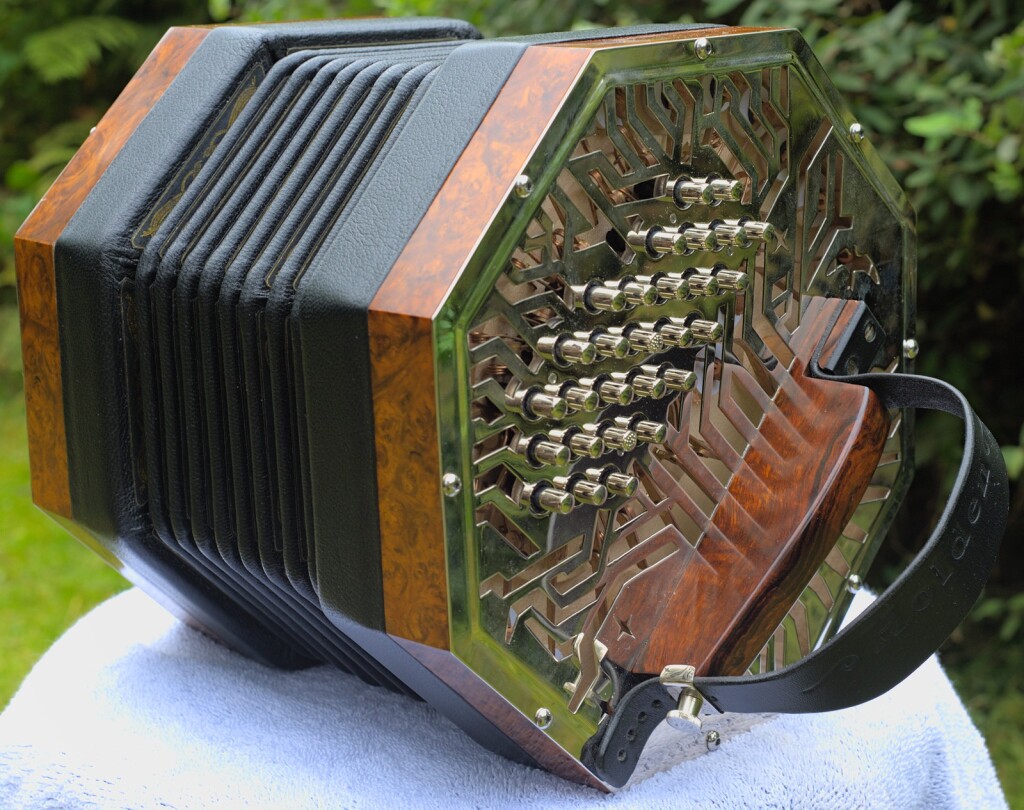No. 14: A 48 Button Viennese Duet
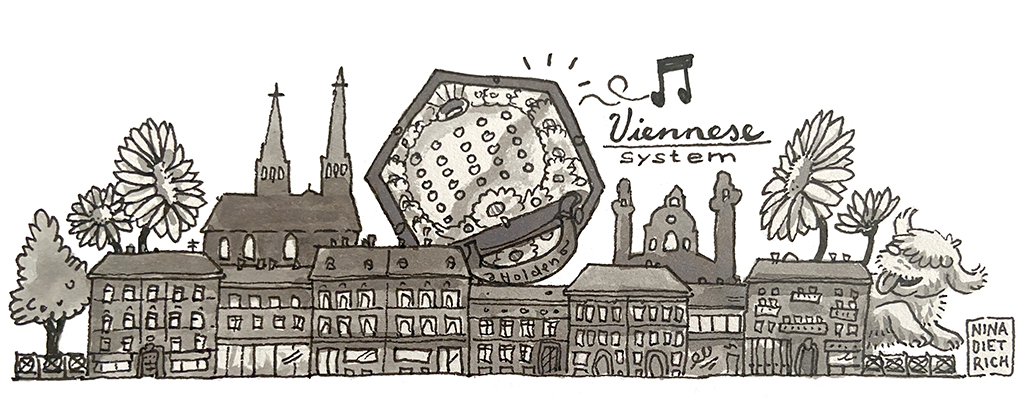
My fourteenth concertina was a small, lightweight, 48 button duet with an unusual keyboard layout inspired by an antique Viennese concertina. We modified the concept slightly by giving the instrument the same keyboard curve, spacing, and hand rails/straps as a Crane duet rather than the slanted straight rows and English-style thumb straps and finger grips of the Viennese original. We felt this change improved the ergonomics as well as freeing up all four fingers to be used for playing.
…
